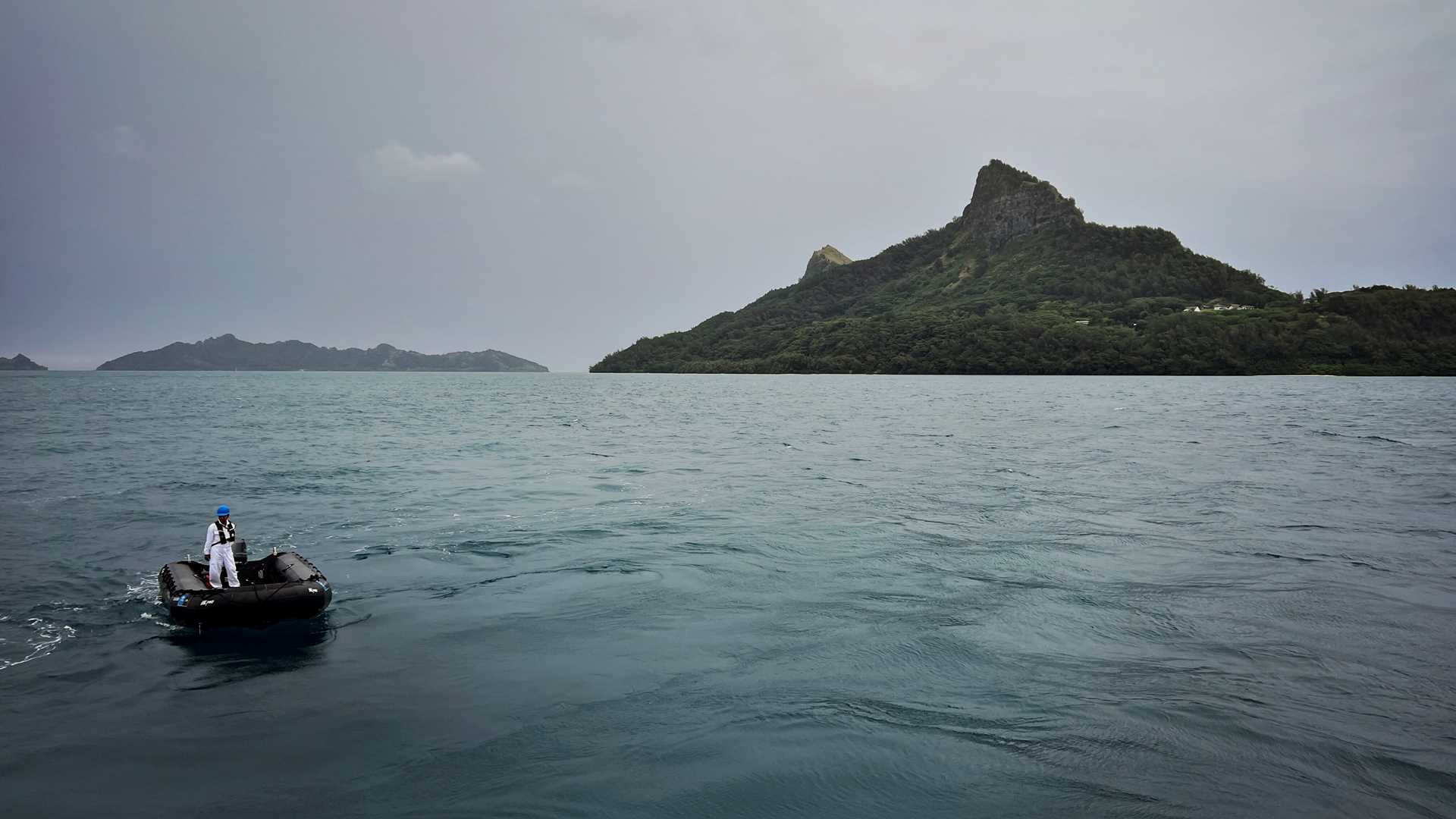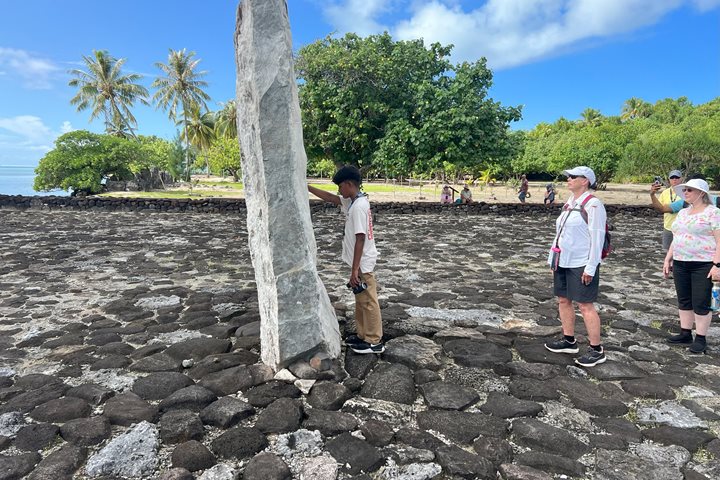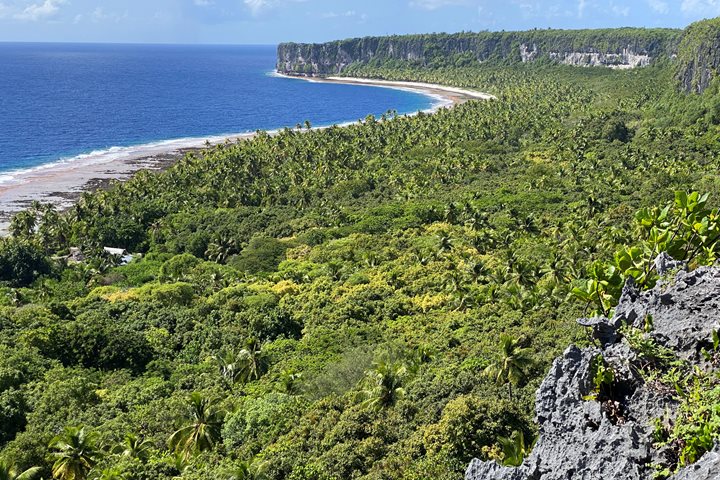The island of Mangareva was our last stop in French Polynesia, and it served as a lovely denouement for our journey through these culturally rich, Francophone islands. The largest of the Gambier Islands, Mangareva has a population of over 1,000 people, making it a relative metropolis compared to some of the smaller atolls we have visited along the way. The topography is striking with Mount Duff jutting impressively skyward.
Our arrival was greeted with a wonderful music and dance presentation. The local elementary school has an impressive percussion ensemble made up of talented young drummers who really got into a groove. Polynesia has a complex pahu (drumming) tradition with elaborate rhythms played a on a wide variety of instruments. Music underpins ritual, sacred, and secular events. Among other types of percussion instruments, the typical ensemble features a large bass drum called a tariparau which provides the steady heartbeat of the rhythm, the fa’atete, a small drum played with sticks, and the to’ere, a log drum with a slit. The band on Mangareva also featured a punu, a metal baking pan beaten rapidly with sticks, making a bright sound that resonated far across the island.
Dancers from the local cultural group Association Takurua, which takes its name from a star, moved elegantly in traditional costumes made from local plants. They sang songs of welcome, tributes to the ancestors, and praise for nature and the abundance it provides. Local vendors offered handcrafted jewelry featuring the region’s famous black pearls along with a buffet of local delicacies such as coconut candies, baked goods, oysters, and fruits.
We spent the rest of the afternoon exploring the village and visiting a Catholic church, which was built in 1845 on top of the traditional marae, the sacred temple of pre-Christian worship. It is an apt symbol of the impact of missionaries on this region, whose efforts to replace local culture with European beliefs and practices led to the banning of many traditional expressions such as music, dance, language, and tattoo art. These cultural practices have been revived and celebrated in recent years, and Christianity now exists alongside ancient traditions.







